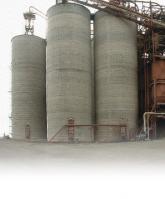About American Gilsonite
With several unique chemical properties and physical characteristics, Gilsonite® improves the performance of many critical materials and applications. The strength, flexibility, extreme light weight, and environmental safety of Gilsonite®make it a superior additive for cementing and drilling fluids in the oilfield, as well as improving performance and quality in asphalt, inks, paints, stains, construction materials and foundry castings.
Our goal at AGC is to create a world class organization so that the health, safety, and financial wellbeing of each employee has long term stability by maximizing the total available value to all stakeholders of the organization. The company provides nearly 100 high-paying jobs to residents of the Uintah Basin, offering a myriad of career opportunities. In addition to underground miners and processing plant operators, we employ automation specialists, industrial electricians and mechanics, truck drivers, lab technicians, IT professionals and administrative support staff. Additionally, as we continue to explore potential advancements in our mining and production methods, we hope to offer more and more technical career opportunities for those living in the Basin.
We understand that the Uintah Basin’s sense of community is something to be treasured and that we have a responsibility to support the organizations working to preserve all the reasons why the Basin is so special. For this reason, AGC is dedicated to making a positive impact on the local community through sponsorship and volunteer participation.
